Themed collection Emerging concepts in nucleic acids: structures, functions and applications

Introduction to emerging concepts in nucleic acids: structures, functions and applications
Dhiraj Bhatia, Prabal Kumar Maiti, Xiaogang Liu and Arun Richard Chandrasekaran introduce the Nanoscale, Nanoscale Advances and Physical Chemistry Chemical Physics (PCCP) themed collection on DNA and RNA nanotechnology.
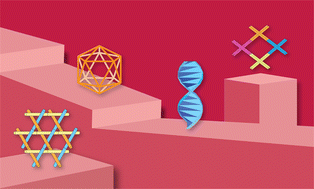
Nanoscale, 2023,15, 12785-12786
https://doi.org/10.1039/D3NR90113K
A survey on molecular-scale learning systems with relevance to DNA computing
DNA computing has emerged as a promising alternative to achieve programmable behaviors in chemistry by repurposing the nucleic acid molecules into chemical hardware upon which synthetic chemical programs can be executed.

Nanoscale, 2023,15, 7676-7694
https://doi.org/10.1039/D2NR06202J
Labeling approaches for DNA-PAINT super-resolution imaging
DNA-PAINT imaging crucially depends on efficient labeling probes, and this article presents a comprehensive coverage on the variety of binders, various labelling chemistries, and DNA sequence pairs employed for its implementation.

Nanoscale, 2023,15, 6563-6580
https://doi.org/10.1039/D2NR06541J
Controllable dynamics of complex DNA nanostructures
In this minireview, we summarized the recent progress of controllable reconfigurations of complex DNA nanostructures induced by nucleic acid strands, environmental stimuli and enzymatic treatments.
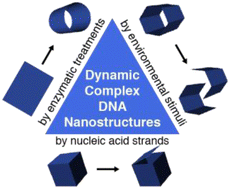
Nanoscale, 2023,15, 4795-4800
https://doi.org/10.1039/D2NR05872C
Uptake and stability of DNA nanostructures in cells: a cross-sectional overview of the current state of the art
Schematic representation of the effect of nucleases on the stability of a DNA structure, which is shown to break along the edges. This article reviews the uptake of DNA nanostructures into mammalian cells for therapeutic interventions.
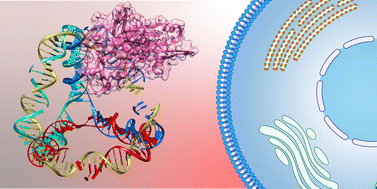
Nanoscale, 2023,15, 2516-2528
https://doi.org/10.1039/D2NR05868E
Point-of-care nucleic acid tests: assays and devices
The COVID-19 pandemic has emphasized the need for accurate, quick, and portable diagnostic devices at the point of care. First, we reviewed the history of nucleic acid diagnostics, its current state, and an outlook for future developments.
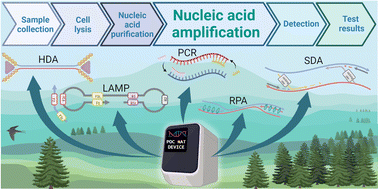
Nanoscale, 2023,15, 942-952
https://doi.org/10.1039/D2NR05385C
Stimuli-responsive nucleic acid nanostructures for efficient drug delivery
This minireview summarizes the recent advances in stimuli-responsive nucleic acid nanostructures for efficient drug delivery in response to endogenous and exogenous stimuli (redox gradient, pH, nuclease, biomacromolecule, and light).
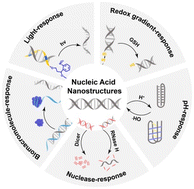
Nanoscale, 2022,14, 17862-17870
https://doi.org/10.1039/D2NR05316K
DNA hydrogels and nanogels for diagnostics, therapeutics, and theragnostics of various cancers
As an efficient class of hydrogel-based therapeutic drug delivery systems, deoxyribonucleic acid (DNA) hydrogels (particularly DNA nanogels) have attracted massive attention in the last five years.

Nanoscale, 2023,15, 10882-10903
https://doi.org/10.1039/D3NR00425B
Integration of functional peptides into nucleic acid-based nanostructures
This review summarizes recent nano-templating approaches based on the combination of DNA and peptides, including strategies to control interactions with biological systems and the use of DNA-peptide conjugates for the generation of new biomaterials.
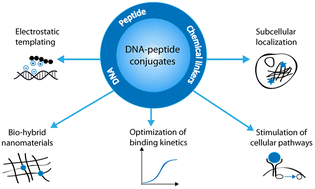
Nanoscale, 2023,15, 7608-7624
https://doi.org/10.1039/D2NR05429A
Synthesizing the biochemical and semiconductor worlds: the future of nucleic acid nanotechnology
Since its inception nearly 40 years ago [Kallenbach, et al., Nature, 1983, 305, 829; N. C. Seeman, J. Theoretical Biology, 1982, 99, 237], Nucleic Acid Nanotechnology (NAN) has matured and is beginning to find commercial applications.
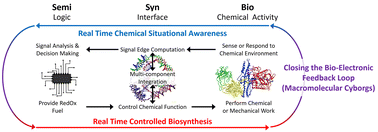
Nanoscale, 2022,14, 15586-15595
https://doi.org/10.1039/D2NR04040A
19F NMR ON/OFF nanoparticles: a universal approach for the specific detection of DNA-binding cancer biomarkers
A supramolecular approach for the design of assembly–disassembly-driven 19F ON/OFF nanoparticles, triggered by specific molecular recognition, for the detection of DNA binding cancer biomarkers is reported.

Nanoscale, 2023,15, 8972-8977
https://doi.org/10.1039/D3NR01175E
Image recovery from unknown network mechanisms for DNA sequencing-based microscopy
Optimal image reconstruction is an open problem in the field of imaging-by-sequencing. We implement an algorithm that is scalable and robust to different network types by using structural discovery.
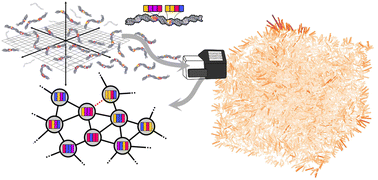
Nanoscale, 2023,15, 8153-8157
https://doi.org/10.1039/D2NR05435C
Investigating the trans-membrane transport of HAIYPRH peptide-decorated nano-drugs
Using force tracing and nano-indentation techniques based on atomic force microscopy, the promoting effect of Tf on T7-modified nano-drug transport was investigated at a single-particle and single-cell level in real time.

Phys. Chem. Chem. Phys., 2023,25, 9766-9771
https://doi.org/10.1039/D3CP00342F
DNA conformational equilibrium enables continuous changing of curvatures
Flipping bases in-or-out allows DNA nanostructures to continuously morph.

Nanoscale, 2023,15, 470-475
https://doi.org/10.1039/D2NR05404C
An 8-bit monochrome palette of fluorescent nucleic acid sequences for DNA-based painting
Using fluorescent labelling, graphical inputs in 8-bit monochrome format can be copied as DNA microarrays in 256 colours with high fidelity. This effort highlights the versatility of in situ microarray photolithography for surface patterning.
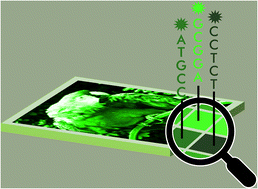
Nanoscale, 2022,14, 17528-17533
https://doi.org/10.1039/D2NR05269E
Recombinase amplified CRISPR enhanced chain reaction (RACECAR) for viral genome detection
A highly modular, 4 h-long ‘recombinase amplified CRISPR enhanced chain reaction’ (RACECAR) assay that can detect as little as 40 copies of hepatitis B virus (HBV) genome has been developed.

Nanoscale, 2022,14, 13500-13504
https://doi.org/10.1039/D2NR03590A
Chemical conjugation of aptamer–sphingomyelin nanosystems and their potential as inhibitors of tumour cell proliferation in breast cancer cells
Sphingomyelin nanoemulsions were covalently conjugated with apMNK2F using a 2-step bioconjugation process. They demonstrated effective intracellular delivery, outperforming free aptamer, resulting in decreased breast cancer cell proliferation.
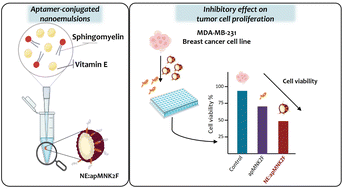
Nanoscale, 2023,15, 19110-19127
https://doi.org/10.1039/D3NR03022A
A rapid total bacterial count method using gold nanoparticles conjugated with an aptamer for water quality assessment
Gold nanoparticles conjugated with an aptamer are used to stain bacteria cells captured on a filter membrane for total bacterial count measurement.

Nanoscale, 2023,15, 16675-16686
https://doi.org/10.1039/D3NR02635C
DNA-protamine condensates under low salt conditions: molecular dynamics simulation with a simple coarse-grained model focusing on electrostatic interactions
Simple coarse-grained model with long-range electrostatic interactions providing a nanoscale picture of DNA aggregation–redissolution behaviours controlled by protamine-DNA charge ratios and protamine length in low-salt regime.

Nanoscale Adv., 2023,5, 4798-4808
https://doi.org/10.1039/D2NA00847E
Utilization of DNA and 2D metal oxide interaction for an optical biosensor
We investigated the efficacy of a novel 2D metal oxide-based optical biosensor related to ss-DNA. This study opens the door to the creation of quick, affordable, and highly sensitive diagnostic biosensors to identify a range of pathogenic diseases.
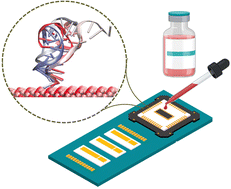
Phys. Chem. Chem. Phys., 2023,25, 17143-17153
https://doi.org/10.1039/D3CP01402A
Activity-enhanced DNAzyme for design of label-free copper(II) biosensor
Electrochemical detection of Cu(II) using -PDA- and Au NP mediated DNAzyme activity enhancement.
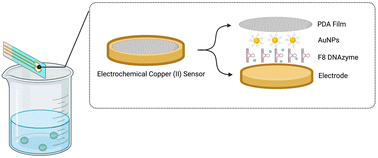
Nanoscale, 2023,15, 10776-10782
https://doi.org/10.1039/D3NR02169F
DNA–Au (111) interactions and transverse charge transport properties for DNA-based electronic devices
Ability to control charge transfer in DNA has profound implications in DNA-based electronics for biosensing, data storage and sequencing. We show that the arrangement of bases and their interactions with the Au substrate are critical in tuning the coupling between orbitals.
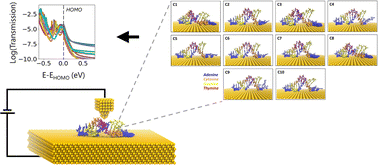
Phys. Chem. Chem. Phys., 2023,25, 16570-16577
https://doi.org/10.1039/D2CP05009A
DNA-caged nanoparticles via electrostatic self-assembly
Top: Schematic of DNA-caged nanoparticle composite formation. Bottom: U87 cells labeled with fluorescent DNA-caged nanoparticles before and after erasing with single stranded DNA. Scale bar = 10 μm.
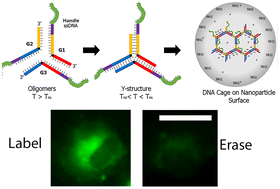
Nanoscale, 2023,15, 9390-9402
https://doi.org/10.1039/D3NR01424J
Intramolecular and intermolecular hole delocalization rules the reducer character of isolated nucleobases and homogeneous single-stranded DNA
Redox properties of DNA strands depend on the balance between intramolecular and intermolecular charge delocalization.

Phys. Chem. Chem. Phys., 2023,25, 14578-14589
https://doi.org/10.1039/D3CP00884C
Tuning innate immune function using microneedles containing multiple classes of toll-like receptor agonists
Microneedle Arrays (MNAs) can be tunably and electrostatically coated with combinations of adjuvants. Upon treatment, these needles elicit tunable immune cell responses.

Nanoscale, 2023,15, 8662-8674
https://doi.org/10.1039/D3NR00333G
Exploring the dynamics of DNA nucleotides in graphene/h-BN nanopores: insights from ab initio molecular dynamics
Nanopore devices based on graphene and h-BN heterostructures show outstanding electrical and physical characteristics for high throughput label-free DNA sequencing.
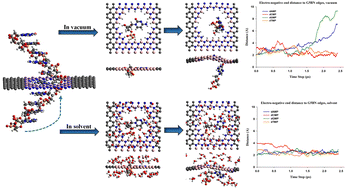
Phys. Chem. Chem. Phys., 2023,25, 13452-13464
https://doi.org/10.1039/D3CP00416C
Thermally reversible pattern formation in arrays of molecular rotors
In this work, we describe the development of a computational model for arrays of rotary DNA origami elements which can self-organize on a large scale and explore the interesting morphologies and order–disorder transition behavior of these systems.

Nanoscale, 2023,15, 8356-8365
https://doi.org/10.1039/D2NR05813H
Contrasting luminescence in heparin and DNA-templated co-assemblies of dimeric cyanostilbenes: efficient energy transfer in heparin-based co-assemblies
Dimeric cyanostilbenes exhibit contrasting fluorescence responses towards heparin (emission enhancement) and DNA (emission quenching). Furthermore, efficient light-harvesting systems were fabricated by exploiting the heparin-based co-assemblies.
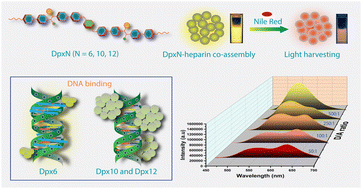
Phys. Chem. Chem. Phys., 2023,25, 12810-12819
https://doi.org/10.1039/D3CP00709J
Creation of ordered 3D tubes out of DNA origami lattices
By tuning the ionic conditions, plus-shaped, blunt-ended DNA-origami lattices are driven to self-assemble elongated, ordered structures: adding Ni2+ triggers the formation of ribbon-shaped 2D-lattices, which roll into 3D-tubes at higher Ni2+ concentrations.

Nanoscale, 2023,15, 7772-7780
https://doi.org/10.1039/D2NR06001A
Spatiotemporal dynamics of DNA nanocage uptake in zebrafish embryos for targeted tissue bioimaging applications
Three-dimensional DNA nanocages have attracted significant attention for various biomedical applications including targeted bioimaging in vivo.

Nanoscale Adv., 2023,5, 2558-2564
https://doi.org/10.1039/D2NA00905F
Systematic altering of semiflexible DNA-based polymer networks via tunable crosslinking
We introduce a new DNA-based approach to systematically investigate the bulk properties of crosslinked semiflexible DNA-based polymer networks as a model for natural biopolymer networks, by stepwise altering the binding affinity of the crosslinkers.

Nanoscale, 2023,15, 7374-7383
https://doi.org/10.1039/D2NR05615A
Detection of DNA translocations in a nanopore series circuit using a current clamp
Here we proposed a new strategy combining the nanopore series circuit and the current clamp to get the voltage trace across the nanopore, hence producing a voltage blockade signal when DNA translocate. This signal exhibits an intriguing charging and discharging phenomenon.

Phys. Chem. Chem. Phys., 2023,25, 10440-10446
https://doi.org/10.1039/D2CP04530C
Selective recognition of the amyloid marker single thioflavin T using DNA origami-based gold nanobipyramid nanoantennas
Design of G-Quadruplex based plasmonic sensor has been demonstrated for the specific SERS based detection of single Thioflavin T molecule using DNA origami-assembled Au nanobipyramid nanoantenna.

Nanoscale, 2023,15, 6170-6178
https://doi.org/10.1039/D2NR06389A
OWL2: a molecular beacon-based nanostructure for highly selective detection of single-nucleotide variations in folded nucleic acids
OWL2 sensor uses T2 and T4 arms for unwinding folded analytes, short P-strand for specific recognition of single base variations and an analyte-independent universal molecular beacon (UMB) probe for cost efficient analysis of any ssDNA or RNA.
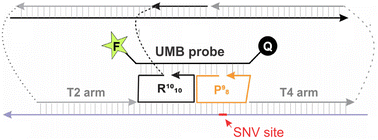
Nanoscale, 2023,15, 5735-5742
https://doi.org/10.1039/D2NR05590B
Programming rigidity into size-defined wireframe DNA nanotubes
Combining experimental and computational design, the length and flexibility of wireframe DNA nanotubes are modulated with minimal design alterations.
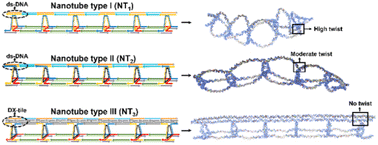
Nanoscale, 2023,15, 5403-5413
https://doi.org/10.1039/D2NR06185F
Lighting up RNA-specific multi-photon and super-resolution imaging using a novel zinc complex
Terpyridine Zn(II) complex has good AIE and three-photon absorption activity, and the ultra-bright fluorescence induced by the aggregation state of Zn complex can assist the multi-photon and super-resolution imaging of nuclear RNA.
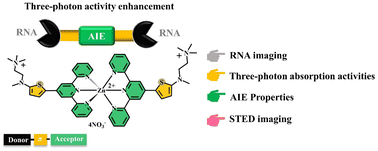
Nanoscale, 2023,15, 5486-5493
https://doi.org/10.1039/D2NR05392F
Mechanistic insight into the structure, thermodynamics and dynamics of equilibrium gels of multi-armed DNA nanostars
We present the self-assembly of DNA nanostars having three, four and five arms into a gel phase using a bead-spring coarse-grained model.
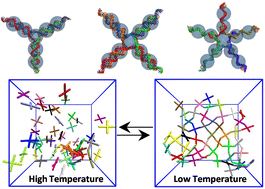
Phys. Chem. Chem. Phys., 2023,25, 7847-7858
https://doi.org/10.1039/D2CP04683K
Charge transport properties of ideal and natural DNA segments, as mutation detectors
DNA sequences of ideal and natural geometries are examined, studying their charge transport properties as mutation detectors.

Phys. Chem. Chem. Phys., 2023,25, 7750-7762
https://doi.org/10.1039/D3CP00268C
Molecular dynamics simulation-based trinucleotide and tetranucleotide level structural and energy characterization of the functional units of genomic DNA
Our work focuses on the structural and energetic analysis of promoters and exon–intron boundaries within DNA using Molecular Dynamics simulation-based parameters mapped over trinucleotides and tetranucleotides.

Phys. Chem. Chem. Phys., 2023,25, 7323-7337
https://doi.org/10.1039/D2CP04820E
Towards control of excitonic coupling in DNA-templated Cy5 aggregates: the principal role of chemical substituent hydrophobicity and steric interactions
Controlling exciton coupling in DNA templated dye aggregates is achieved by modifying sterics and hydrophobicity of Cy5-R dyes (varying the 5,5′-substituents). We conclude that sterics play the main role in orientation and coupling strength.
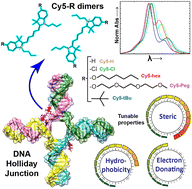
Nanoscale, 2023,15, 3284-3299
https://doi.org/10.1039/D2NR05544A
A DNA origami-based device for investigating DNA bending proteins by transmission electron microscopy
Using a reconfigurable DNA origami device, we study the bending of DNA by a bending protein. To this end, we used transmission electron microscopy to directly observe the structural reconfiguration of the origami devices caused by the protein.

Nanoscale, 2023,15, 3212-3218
https://doi.org/10.1039/D2NR05366G
DNA radiosensitization by terpyridine-platinum: damage induced by 5 and 10 eV transient anions
The intercalation of the chemotherapeutic drug terpyridine-platinum within the G-quadruplex structure of DNA sensitizes cancer cells to the low energy electrons produced by ionizing radiation during radiotherapy.

Nanoscale, 2023,15, 3230-3242
https://doi.org/10.1039/D2NR05403E
Photocontrolled DNA nanotubes as stiffness tunable matrices for controlling cellular behavior
Cell behavior is determined by a variety of properties of the extracellular environment like ligand spacing, nanotopography, and matrix stiffness.
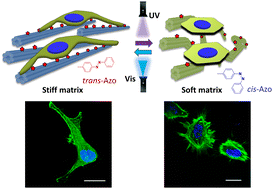
Nanoscale, 2023,15, 2904-2910
https://doi.org/10.1039/D2NR05202D
Interplay of the mechanical and structural properties of DNA nanostructures determines their electrostatic interactions with lipid membranes
Nucleic acids and lipids function in close proximity in biological processes, as well as in nanoengineered constructs for therapeutic applications.
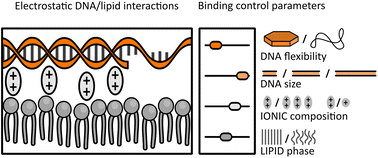
Nanoscale, 2023,15, 2849-2859
https://doi.org/10.1039/D2NR05368C
Block copolymer self-assembly to pattern gold nanodots for site-specific placement of DNA origami and attachment of nanomaterials
A self-assembled block copolymer is used to create nanoscale arrays of gold dots for selective self-assembly of DNA origami and directed placement of gold nanorods for nanoelectronics applications.
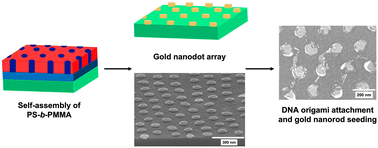
Nanoscale, 2023,15, 2188-2196
https://doi.org/10.1039/D2NR05045E
Cationic lipid modification of DNA tetrahedral nanocages enhances their cellular uptake
We present the functionalization of a model DNA cage, tetrahedron with a cationic lipid, DOTMA; demonstrating enhancement in cellular uptake of DNA nanocages by minimizing the negative charge and increasing hydrophobic surface mediated internalization.

Nanoscale, 2023,15, 1099-1108
https://doi.org/10.1039/D2NR05749B
A direct approach toward investigating DNA–ligand interactions via surface-enhanced Raman spectroscopy combined with molecular dynamics simulations
Schematic diagram of a new method for analyzing interactions between DNA and its ligands based on surface-enhanced Raman spectroscopy (SERS) combined with molecular dynamics simulations.

Phys. Chem. Chem. Phys., 2023,25, 2153-2160
https://doi.org/10.1039/D2CP04566D
DNA origami tubes with reconfigurable cross-sections
This work presents the developed a multi-component DNA origami 6-bar mechanism that can be assembled into tubes with reconfigurable cross-sections, bridging complex shape transformations of DNA devices to micron-scale assemblies.

Nanoscale, 2023,15, 562-572
https://doi.org/10.1039/D2NR05416G
An intelligent, autocatalytic, DNAzyme biocircuit for amplified imaging of intracellular microRNAs
An intelligent, autocatalytic, DNAzyme biocircuit based on a CD/AM nanodevice was constructed for precise sensing and logical calculation of intracellular microRNAs.
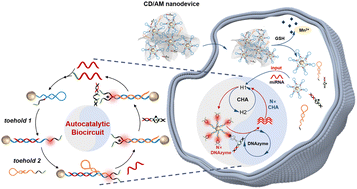
Nanoscale, 2023,15, 578-587
https://doi.org/10.1039/D2NR05165F
Transfer of multi-DNA patches by colloidal stamping
By use of colloidal stamps, several functional DNA patches were patterned at the surface of particles. The produced DNA-patchy particles are ideal candidates to act as advanced designer building blocks to self-assemble next generation materials.
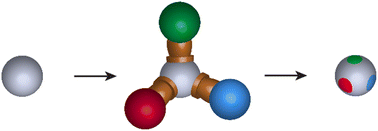
Nanoscale, 2023,15, 573-577
https://doi.org/10.1039/D2NR05016A
5-Formylcytosine weakens the G–C pair and imparts local conformational fluctuations to DNA duplexes
DNA epigenetic modification 5-formylcytosine (5fC) confers unique and specific conformational changes to duplex DNA.
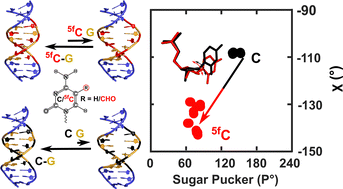
Phys. Chem. Chem. Phys., 2023,25, 241-254
https://doi.org/10.1039/D2CP04837J
Molecular states and spin crossover of hemin studied by DNA origami enabled single-molecule surface-enhanced Raman scattering
The study of biologically relevant molecules and their interaction with external stimuli on a single molecular scale is of high importance due to the availability of distributed rather than averaged information.
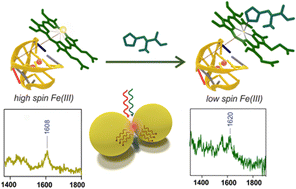
Nanoscale, 2022,14, 16467-16478
https://doi.org/10.1039/D2NR03664A
Biomass derived self-assembled DNA-dot hydrogels for enhanced bacterial annihilation
Sustainable antibacterial hydrogel from hybridization mediated self-assembly of DNA Quantum Dot and genomic DNA extracted from onion.
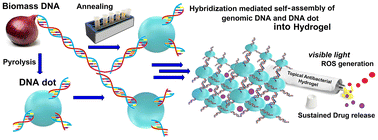
Nanoscale, 2022,14, 16097-16109
https://doi.org/10.1039/D2NR03810B
Parallel DNA circuits by autocatalytic strand displacement and nanopore readout
Parallel DNA circuits are constructed using autocatalytic strand displacement reactions and measured using a nanopore multiplexed sensing platform.

Nanoscale, 2022,14, 15507-15515
https://doi.org/10.1039/D2NR04048D
Protection of DNA by metal ions at 95 °C: from lower critical solution temperature (LCST) behavior to coordination-driven self-assembly
While polyvalent metal ions and heating can both degrade nucleic acids, we herein report that a combination of them leads to stabilization.
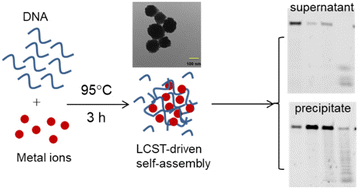
Nanoscale, 2022,14, 14613-14622
https://doi.org/10.1039/D2NR03461A
A simple solution to the problem of self-assembling cubic diamond crystals
The self-assembly of colloidal diamond (CD) crystals is considered as one of the most coveted goals of nanotechnology, both from the technological and fundamental points of view.
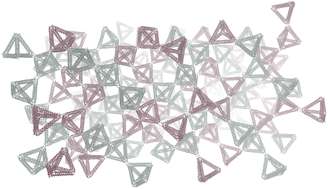
Nanoscale, 2022,14, 14268-14275
https://doi.org/10.1039/D2NR03533B
DNA-assisted selective electrofusion (DASE) of Escherichia coli and giant lipid vesicles
DNA-assisted selective electrofusion (DASE) combines the efficiency of standard electrofusion with the selectivity of DNA-mediated interactions. Here we apply DASE to induce the fusion between giant lipid vesicles and E. coli derived spheroplasts.

Nanoscale, 2022,14, 14255-14267
https://doi.org/10.1039/D2NR03105A
About this collection
Guest Edited by Dr Arun Richard Chandrasekaran (University at Albany, SUNY, USA), Dr Dhiraj Bhatia (IIT Gandhinagar, India), Professor Xiaogang Liu (National University of Singapore, Singapore) and Professor Prabal Maiti (Indian Institute of Science, Bangalore, India).
DNA nanotechnology is a rapidly growing field that utilizes DNA as a structural molecule to design a palette of structures at the nanoscale level. Recent developments in the field of DNA nanotechnology demonstrate the potential of DNA to be a new material with exceptional utility for various applications in biophysics, chemical biology, photonics, energy harvesting and computing, to name a few.
This cross-journal collection in Nanoscale and Physical Chemistry Chemical Physics (PCCP) brings recent updates in nucleic acids research under three broad themes: structure, functions and applications. The collection focuses on self-assembly, structure-function relationships, physical chemistry and biophysics of nucleic acids, new structures and new technologies involving nucleic acid modelling and simulation and various applications in biology, medicine, robotics, materials science, computing and other fields.